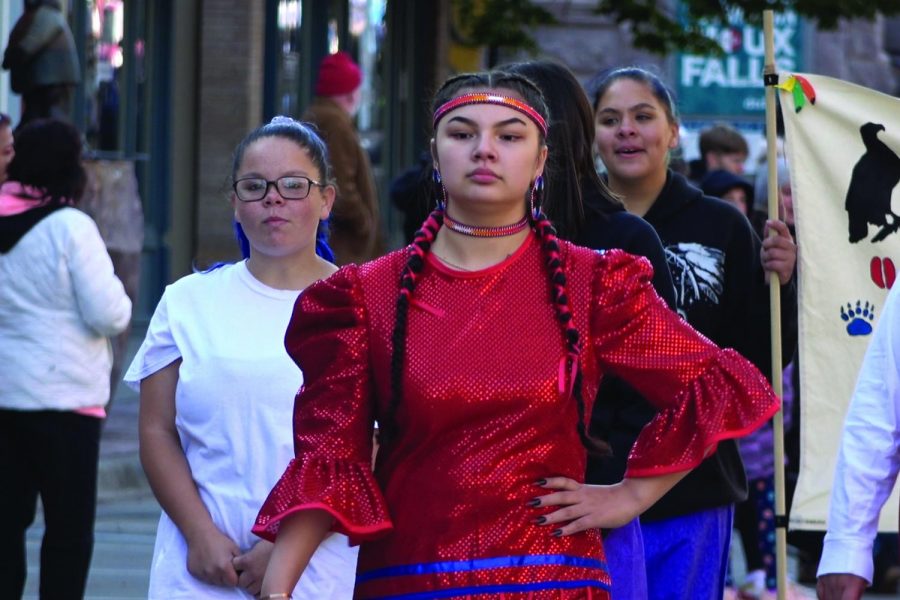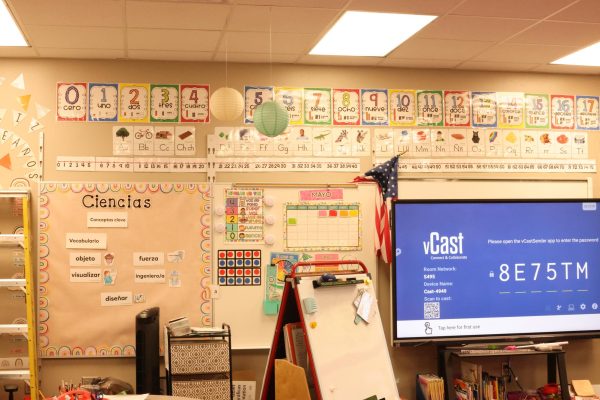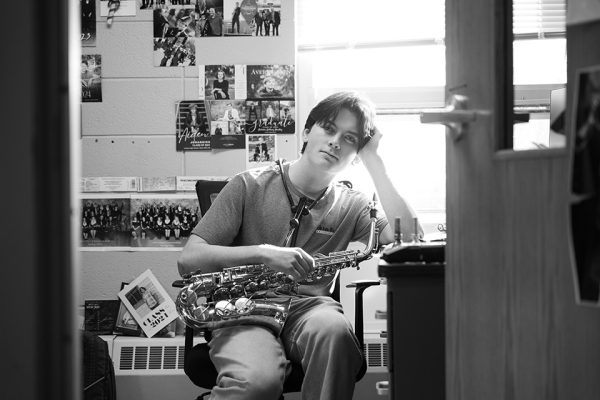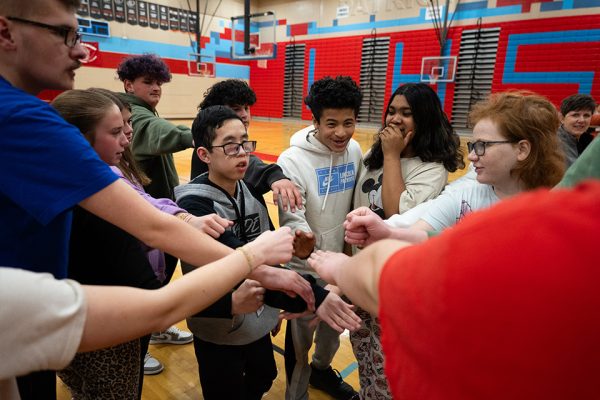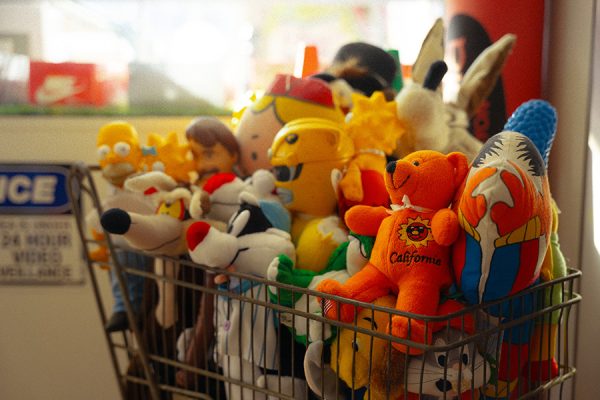Flying and healing: Native American dancers take center stage
Halo St. Pierre walks in the 2nd Annual Sioux Falls Native American Day Parade in full Jingle Dress regalia. Also pictured (left to right): Jahnessah Rondell (9), Jaquelynn Rondell (10).
A colorful display of vibrance and tradition, the annual Native American Day Pow Wow held at the Multi-Cultural Center is just one of many events where two LHS students impress with their dancing skills.
Halo St. Pierre, an LHS junior, and Ilea Joseph, an LHS sophomore, participate in dancing as a means of connecting with their culture, since neither live on their respective tribal reservation lands. Both have been dancing since they were old enough to walk. As they have grown older, dance has come to mean more to them in terms of their cultural history and what the performance represents. Now, they compete with their dances in numerous pow wows held across the state throughout the year.
At the Native American Day Pow Wow, both performed their specialty routines: St. Pierre the Jingle Dress, and Joseph the Fancy Shawl.
The Jingle Dress dance is an expression of healing power. The dance is roughly four to five minutes long, paced by drums and singers, another traditional element of the event. Wearing painstakingly-crafted regalia, lush with healthy colors and accessories, St. Pierre expresses the story of a young girl’s healing through the effortless movement of her dress’s numerous jingles.
“[This is] from the origin story: there was this little girl who got sick,” said St. Pierre. “Her dad made her a jingle dress, he told her to get up to dance and that’s how she started to heal.”
Through her extensive practice of the dancing, cumulating over 11 years now, St. Pierre has become an expert and hopes to pass down the tradition.
“I just feel more connected to my culture, because…not everybody knows how to dance,” said St. Pierre. “Not everybody is connected to our culture.”
St. Pierre is originally from Wagner, but she moved to Sioux Falls about two years ago. She notes a difference in the educational opportunities she has to connect with her cultural history in Sioux Falls. For instance, though she learned to dance on the Yankton Sioux Tribe Reservation, she was not able to take a class on Native American history.
“I feel like Sioux Falls gives me more opportunities,” said St. Pierre. “In Wagner…there wasn’t anyone teaching our culture.”
St. Pierre is grateful for the chance she has at LHS to make sure her culture doesn’t die out. Native American Connections class and Lakota Language class are allowing her to understand her roots.
Janet Fleming-Martin, as the Native American Connections teacher at LHS, is especially aware of the opportunity she has to reconnect students with a lost past.
“I think the most important and critical part is knowing what has happened in the history and culture of all Native people,” said Fleming-Martin. “There needs to be an understanding from the perspective that’s not the Euroamerican perspective, but from the Native American perspective.
“Most of this information was lost to at least two—if not three—generations of Native people. So that opportunity to learn about the culture is really…important because of all the negative stuff that is out there.”
Fleming-Martin was unable to attend this year’s pow wow in Sioux Falls, but notes that St. Pierre and Joseph are amazing competitors all year round.
“I know that several of my students—certainly, Halo and Ilea are some of the best—have participated since they were very young,” said Fleming-Martin. “They go to a lot of competitions…They get to be a part of that and experience that, and participate in something that really makes the culture shine.”
Halo and Joseph are often the top two candidates in each competition they take part in, though Joseph takes on a different dance altogether.
Joseph’s speciality is the Fancy Shawl dance, which symbolizes the eagle. Similar to the Jingle Dress tradition, the regalia for this dance is colorful, unique and precise. However, the addition of a large wing-like shawl gives the dancer more to work with in terms of their outfit. The regalia, in effect, is an integral part of the routine. Though short, the dance is rife with meaning and intricacy.
“Most dances are like two minutes [long], because of the songs that they sing,” said Joseph. “[The fancy shawl dance] is based on the arms, like ‘flying like an eagle.’”
The competitive atmosphere can be nerve-racking, especially as the length of the pow wows can prolong the waiting period for results.
“Most of the pow wows are three days,” said Joseph. “Then, when the pow wow is over, on the last day, everyone waits to hear if they placed or not. So it’s exciting to actually hear your name, because there’s a lot of dancers and only 5 places to get judged.”
Joseph is a member of the Rosebud Sioux tribe, but has lived in Sioux Falls all her life. Thus, dancing is one way Joseph regularly connects with her culture. And it is a commitment; Joseph spends her whole summer practicing and continuing her learning.
“[Pow wows are] my whole summer,” said Joseph. “I’m basically gone [all] summer living on the rez.”
Noting that Fleming-Martin, as well as other teachers, wanted to attend the pow wow this year, Joseph remarked on the opportunity LHS faculty and student body have to attend the event next year with Native American Day off.
“I feel like it’s a good opportunity [for people] to go and see our culture,” said Joseph.
Fleming-Martin and Halo express similar sentiments on the exciting possibility this fact presents.
“Everybody can do it,” said St. Pierre, referring to the dance.
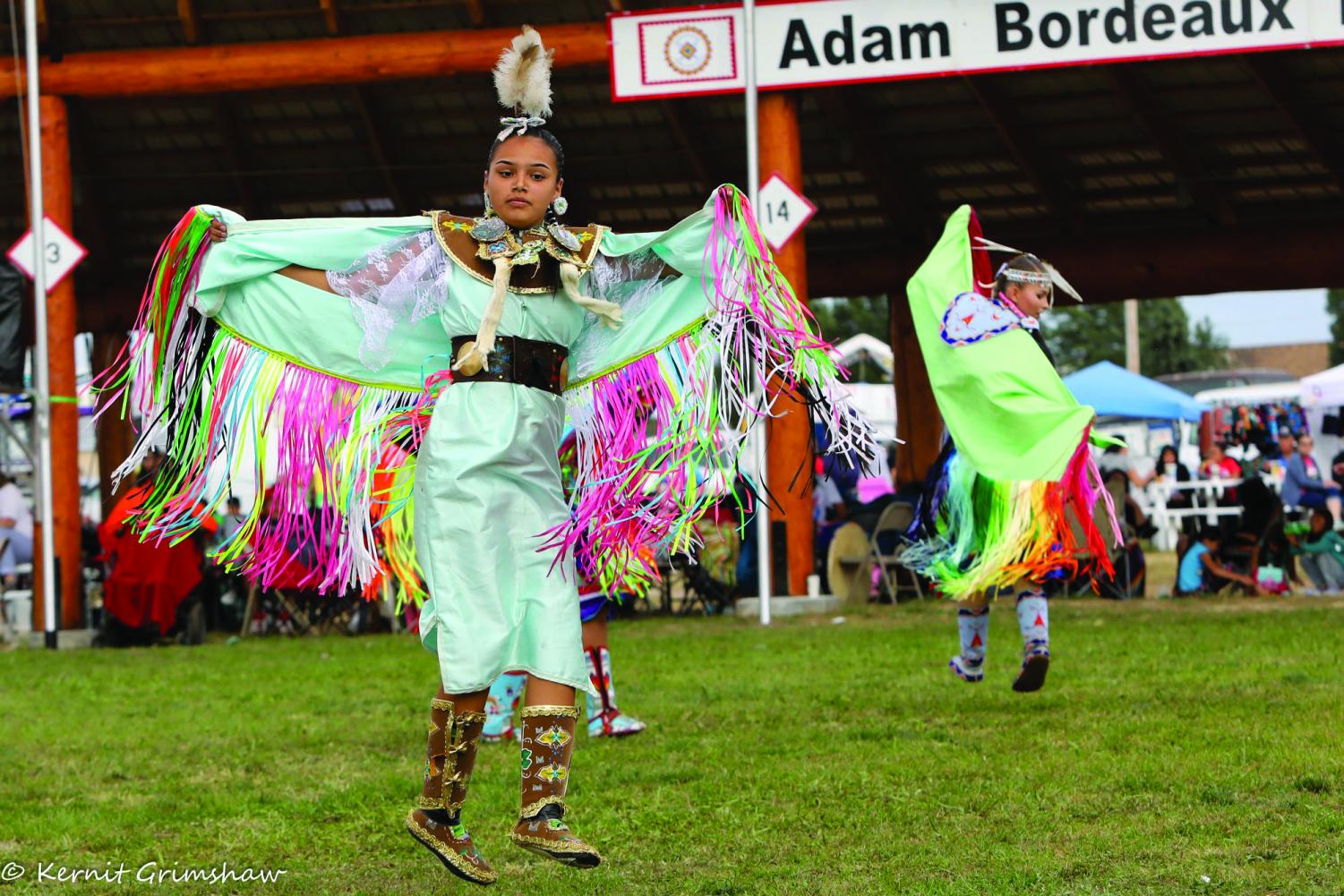
Ilea Joseph dances Fancy Shawl at the pow wow held on Aug. 25-26 on the Rosebud Reservation. Joseph won first place.
St. Pierre recounts an instance at this year’s pow wow that reminded her of the inclusive environment she feels the pow wows inspire.
“At the Multi-Cultural Center, there was this little girl who was white,” said St. Pierre. “She looked like she was four or five, and her mom asked if it would be okay if she danced with me and she did. It’s open to everyone.”
The pow wow circuit that these LHS students have participated in for years has provided them a sense of community and a connection to a culture that has been damaged for centuries. They are shining examples of the positive regrowth that these events have brought forth. All LHS students have the unique opportunity to watch and participate in these pow wows, which only happen in our part of the world.
St. Pierre needs the pow wows and education of her Native history to continue. It is imperative that the missing link that once existed between generations is resolved.
“This is a part of ourselves that we have to have,” said St. Pierre. “Otherwise, I feel like there [will be] an empty hole there.”
Luckily, as times have changed, there are inviting spaces in the public eye that Native people have fought for and regained that allow children, especially young Native Americans, to learn about this culture. Spaces which gave and continue to give young Native girls the chance to fly like an eagle and heal with noise and dance, the chance to reconnect and rejoice.
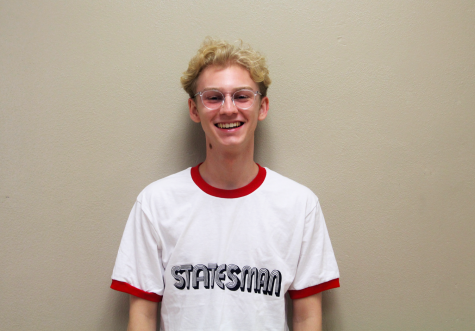
Timothy Stolp is excited to be one of four Co-Editors-in-Chief of the Statesman as an LHS senior this year. Though his focus will be on the paper issues,...



